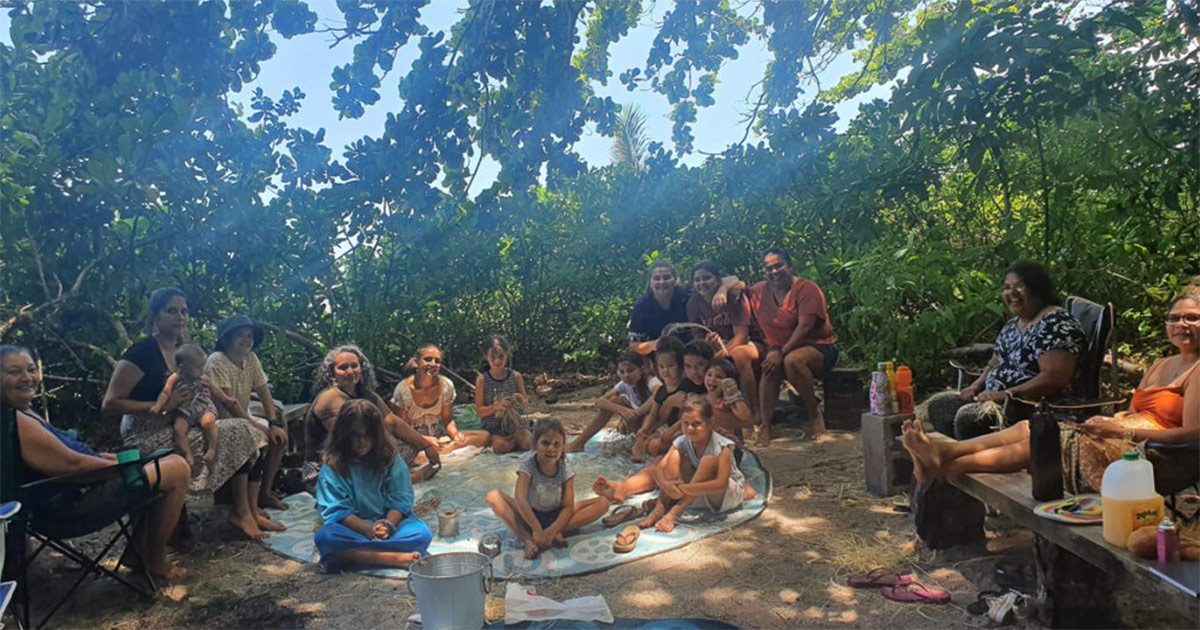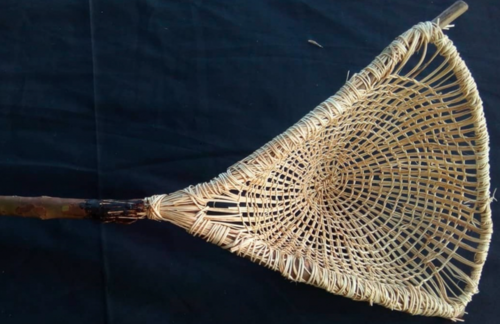
A Place for weaving stories and cultural resilience
-----------------
Can you describe your uncle and his vision for the land?
Uncle Bennett is the eldest of all Nana’s twelve children. He is a respected elder in the Kuku Yalanji community and whenever I have questions or need advice, I often turn to him. To me, Uncle is one of the most knowledgeable persons I know. His knowledge about our kinship/family lines, culture and country is vast. There are few elders in our community that we can turn to for this advice and knowledge.
Over the last couple of years, I’ve visited my Uncle and the family block he has been working on at Cooya Beach (Kuyu Kuyu). He and his family have been working tirelessly to vegetate and maintain the land with the support of other organisations such as Jabalbina and Kubirriwarra Yalanji Corporation It is truly a sight to see. Imagine a big field at the mouth of the river dedicated to traditional plants and spaces to make traditional tools and weaving workshops
What do you do on that land?
I do weaving lessons. There are black palm trees I planted in Daintree that have now been transplanted on the block to create a space to do weaving lessons. Just over a year ago I taught the women recruits from the Indigenous Navy Reserve. It was a whole day cultural program.
There is a Welcome to Country, followed by a tour of the property where they learn about all the different plants and their uses.
The property is made up of sections, including rows of plants for medicine, cultural tools and bush tucker.
The men made woomeras, while I do my weaving sessions with the women. They then walked out on the mudflats to go hunting with kuku yalanji cultural tours (Uncle Bennett’s sons). They also participated in tree planting on the block at the end of their visit.


